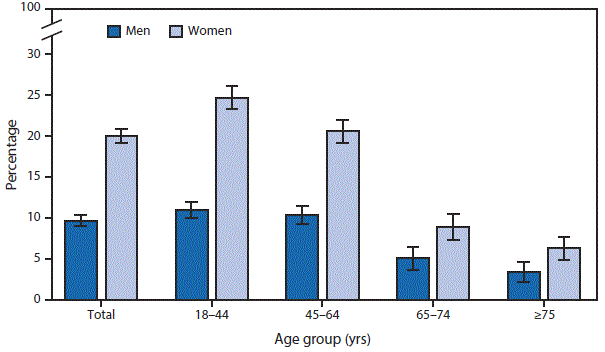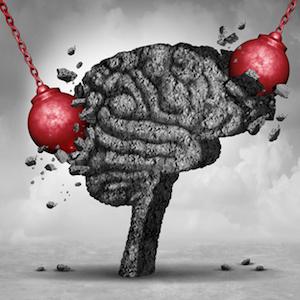Women suffer about twice as many severe headaches and migraines as men.
Genetics likely plays a role. According to a review published in The Lancet Neurology, migraines are polygenic (i.e., many different genes contribute to migraines.) Indeed, a meta-analysis in Nature Genetics identified several dozen genes, mainly associated with blood vessel and smooth muscle tissue.
But genetics probably does not explain the difference in migraine prevalence between men and women. That discrepancy appears to be the fault of hormones, especially estrogen. According to NPR, boys have slightly more migraines than girls until puberty. But that all changes once boys turn into men and girls turn into women. The hormonal fluctuations associated with menstruation appear to be a major trigger for migraines in women.
This hypothesis gained even more support with recent data from the CDC, which examined the percentage of men and women who self-reported severe headaches and migraines within the past three months. (See chart.)

Women aged 18 to 44 -- who are in the prime of child-bearing years -- have it the worst. In this age group, women are about 2.5 times as likely to report migraines as men. The age 45 to 64 demographic, which includes many pre-menopausal women, still exhibits a two-to-one difference.
As both men and women age, the prevalence of migraines decreases. From 65 onward, however, the two-to-one ratio also drops. While women still report more migraines than men, the gender gap has tightened. This lends support to the notion that hormone fluctuations play a role in women's migraines, though it obviously does not tell the entire story.
Source: "QuickStats: Percentage of Adults Aged ≥18 Years Who Reported Having a Severe Headache or Migraine in the Past 3 Months, by Sex and Age Group — National Health Interview Survey, United States, 2015." MMWR 66 (24): 654. Published: 23-June-2017. DOI: 10.15585/mmwr.mm6624a8.




